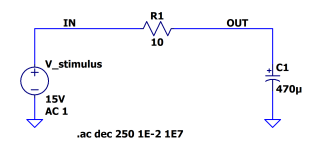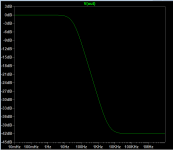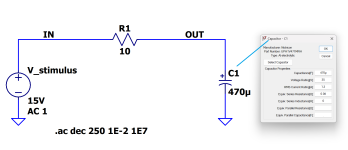Another way of looking at this to feed a fast rise time square wave into the diff amp and then look at whether or not the diff pair switches ie one of the fief amp devices is driven into cutoff. Most diff amps will require degeneration - typically this will be 5x to 10x .026/Ie. If after degeneration the diff amp is still switching, an input bandwidth limiting filter is required - that’s usually set at 10x the audio bandwidth - so 200 kHz or higher.
Another design rule: always assume inputs will be corrupted by RF. Even suburbia can have many RF sources: cordless telephones, cell phones, wifi, leaky microwave ovens, and unbalanced cable shields are a wonderful way of letting RF into the box. My preference on all my gear is for XLR connectors on balanced lines with shields tied to chassis ground, no poxy RCAs allowed.
https://www.audiosciencereview.com/...pecially-of-the-lm4562-lme497x0-family.10687/
https://www.nationalgeographic.com/...-the-culprits-behind-mysterious-radio-signals
https://www.audiosciencereview.com/...pecially-of-the-lm4562-lme497x0-family.10687/
https://www.nationalgeographic.com/...-the-culprits-behind-mysterious-radio-signals
You don't say. There's a reason all my circuits have RFI filters on them. 🙂Another design rule: always assume inputs will be corrupted by RF. Even suburbia can have many RF sources
This is the wifi environment as viewed from my backyard. Only two of those networks are mine. Granted, I live in "inner city" Calgary, which is a fairly broad term. I'm about 4-5 km from City Hall.
... which reminds me of another rule not taught in school: Lowpass filters have increasing attenuation throughout the entire stop band.
Tom
Tom
As Mark points out, not with real world parts. Note the entirely reasonable ESR for the capacitor in Schematic_2.
Don't know why that plot is flattening off, but that's not correct. There is increasing attenuation although not in a strict by-the-formula way due to parasitics, changing impedance etc. Lies, damn lies and SPICE. 😕
DOH! I missed a DON'T in Post 31. This is why I hate double negatives.
What is taught in school is that lowpass filters have increasing attenuation in the stop band. That's not the case in reality.
I was thinking specifically of active filters where the loop gain of the opamp limits the stop band attenuation, but as Mark pointed out undesirable stop band performance is not limited to active filters.
Tom
What is taught in school is that lowpass filters have increasing attenuation in the stop band. That's not the case in reality.
I was thinking specifically of active filters where the loop gain of the opamp limits the stop band attenuation, but as Mark pointed out undesirable stop band performance is not limited to active filters.
Tom
Your own wifi and smartphones will generate much higher RF levels than a base station or outdoor access point, even if its fairly near.You don't say. There's a reason all my circuits have RFI filters on them. 🙂
This is the wifi environment as viewed from my backyard. Only two of those networks are mine. Granted, I live in "inner city" Calgary, which is a fairly broad term. I'm about 4-5 km from City Hall.
View attachment 1359903
Not mine, Texas Instruments,
EDIT: https://www.ti.com/lit/ug/tidu765/tidu765.pdf?ts=1726853861402&ref_url=https%3A%2F%2Fwww.google.co.in%2F
View attachment 1358535
Even I do not personally like to design anywhere near the limit, but the above recommendation is not mine.
I don't get those numbers..... where did 0.2182 come from?
Why? Stainless steel is usually harder to work but it tends to stay prettier unpainted. It comes in fairly wide varieties allowing for more or less formablity, magnetic properties and of course corrosion resistance.Another design rule not taught in school is to never use stainless steel for casings.
Most of the stainless I use is type 304 in sports facilities television broadcast cabling interconnect panels.
One time I was punching a piece of 1/8 thick stainless steel using a parting punch designed to punch 1/4” wide by 3” long slots. The first punch made a noise I haven’t heard before. So I stopped the machine and discovered even with 35 metric tons of force the punch wouldn’t go through the metal! A resharpening with a taper allowed the punch to work. The long term solution was to get a 2” long punch. (.018” die clearance.)
Enrico Fermi to his daughter Nella: "Never make something more accurate than necessary"
Fermi enraged fellow physicists by gravitating toward simple and direct explanations which were not elegant, but they were accurate. As a youth in Rome, he taught his college profs much of Einstein.
for more stuff on Fermi: "The Last Man Who Knew Everything"
Fermi enraged fellow physicists by gravitating toward simple and direct explanations which were not elegant, but they were accurate. As a youth in Rome, he taught his college profs much of Einstein.
for more stuff on Fermi: "The Last Man Who Knew Everything"
- Home
- Design & Build
- Electronic Design
- Design rule not taught in school


